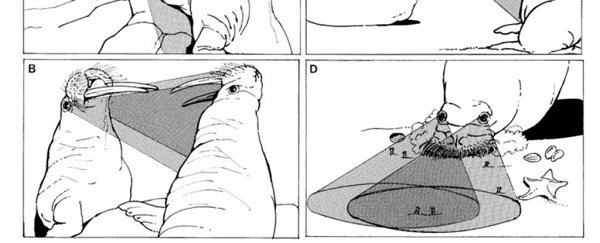Some scientific concepts are so intricate and discombobulating, they are difficult to convey in words - but a good, old-fashioned visual aid can make it crystal clear.
Scientific illustration is an art form. Not only can it communicate complicated concepts clearly, supplementing and expanding verbal explanations, it can also be incredibly beautiful - from reconstructions of ancient beasts known only from fossils (palaeoart) to illustrations that demonstrate subatomic particles.
But not every concept is going to result in a serious picture. A squid in an MRI machine is always going to look pretty funny, no matter how well it is drawn.
So, the results of visually communicating science are often quirky, strange and, honestly, charming as heck. They're imbued with a certain je ne sais quoi that cannot be striven for, but must evolve organically from the concept, the illustration, or some arcane combination of both.
We've seen many such illustrations that stopped us in our tracks and made us smile. Here are some of our favourites - we hope you get a grin out of them, too.
You don't want to cross a walrus
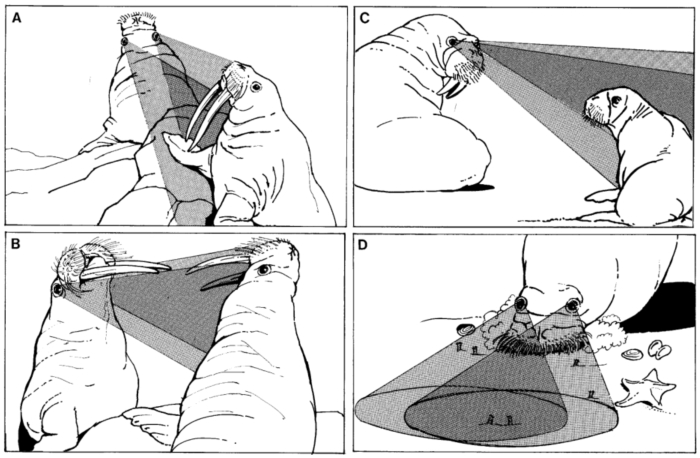 (Rijkent Vleeshouwer)
(Rijkent Vleeshouwer)
In the early 1990s, marine biologist Ronald Aart Kastelein and colleagues produced a series of detailed papers in the journal Aquatic Mammals describing the anatomy of the head of the walrus (Odobenus rosmarus). These were replete with visual aids, including photographs, diagrams, and illustrations.
The above illustration was drawn for the 1993 instalment "The anatomy of the Walrus head (Odobenus rosmarus). Part 3: The eyes and their function in Walrus ecology". It does not, however it looks, illustrate walrus eyebeams, but the estimated visual field of each walrus eye in four different situations.
We don't know what our favourite part is, but that adorable bristly moustache as the walrus forages on the seafloor is a strong contender.
Fungi have feelings, too
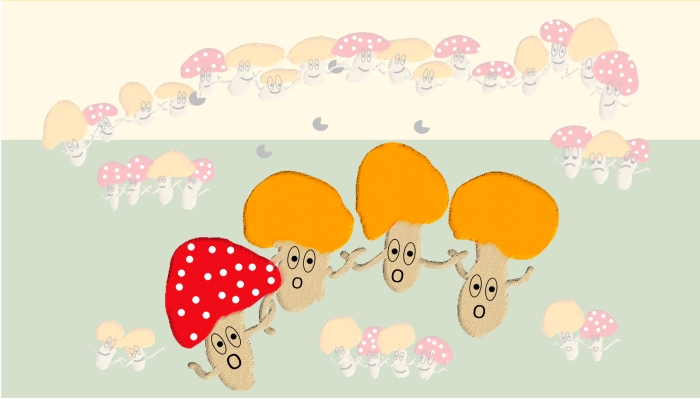 (Sruthi Sreekumar)
(Sruthi Sreekumar)
Plants are prone to their own diseases, and as such they have their own immune response. Researchers recently found a quirk in this response that could allow them to bolster plant disease resistance.
This illustration accompanied their press release - it's depicting a four-part chain of fungus chitosan with acetic acid residue only on the first unit. We can explain!
Plant-infecting fungi can hide from their hosts' immune systems by converting some of their chitin - a carbohydrate polymer that supplies structural support - into a sugar called chitosan. Researchers from the University of Münster in Germany found that plants can react to a pattern in this chitosan that allows them to mount an immune response anyway.
Chitosan comes in chains of varying length (pictured in the background of the illustration), with only some of the sugar units carrying acetic acid.
The team figured out that, specifically, a chitosan chain of four units, with acetic acid residue only on the left-most unit, triggered the plant immune response. This, they believe, can be used to develop a plant vaccine. Their results were published in the Journal of the American Chemical Society. Pretty cool, huh?
An actual squid MRI
 (Chung et al., iScience, 2020)
(Chung et al., iScience, 2020)
You thought we made up the squid MRI, didn't you? Well, no. A team of scientists from the University of Queensland in Australia recently conducted a first-of-its-kind study to generate the most high-resolution 3D map of squid brains to date.
To do this, they used two types of MRI, contrast-enhanced magnetic resonance imagery, and high angular resolution diffusion magnetic resonance imagery. They stained preserved squid samples with silver dye or multicoloured fluorescent neural tracers, and ran them through the machine.
This enabled them to identify 145 new, previously unknown major neural pathways in the squid brain.
Oh god not the cyanodragon
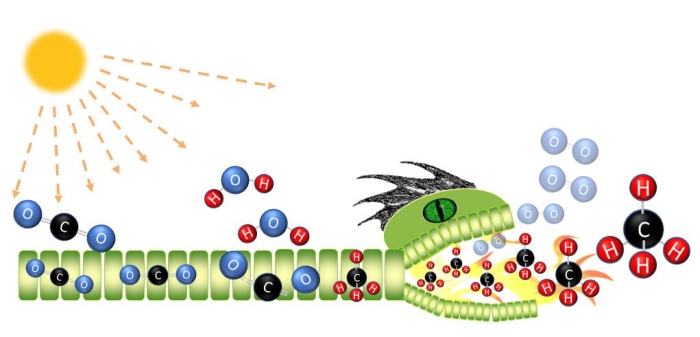 (M. Bižić)
(M. Bižić)
One of the most potent greenhouse gases is methane, and it comes from a variety of sources. Many of them are anthropogenic - agriculture, for instance, and fossil fuel mining are huge contributors to methane emissions.
The gas is emitted by a number of biological processes, too. A team of researchers recently discovered that one such biological source is blue-green algae, or cyanobacteria. This illustration was created by lead author Mina Bižić, an aquatic microbial ecologist at the Leibniz Institute of Freshwater Ecology and Inland Fisheries in Germany.
She and her team discovered that methane levels near the surface of Lake Stechlin in Germany were higher than they should be if the gas was being produced by archaea in the sediment, as had been thought. So, they cultured cyanobacteria from several sources in a lab and sure enough, methane levels were high in each of their samples.
The illustration shows how cyanobacteria could be breaking down carbon dioxide (CO2) and converting it into methane (CH4) through the medium of water (H2O).
Suffering mosquitoes
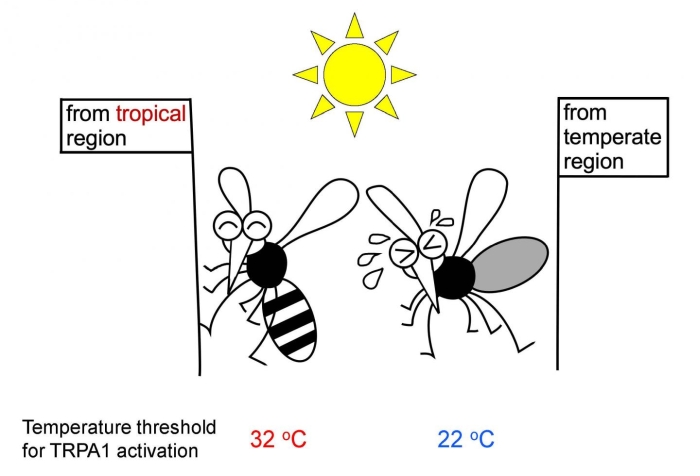 (Makoto Tominaga)
(Makoto Tominaga)
Nobody likes getting bitten by mosquitoes, but what do mosquitoes hate? That was the subject of a recent study by scientists at the National Institute for Physiological Sciences in Japan. They hope that, by finding out what mosquitoes avoid, they can develop better repellents.
The team focused their study on a sensory receptor called TRPA1, a sensor for environmental irritants, such as uncomfortable temperatures and noxious chemicals. They studied this gene in several species of mosquitoes - Anopheles gambiae, A. stephensi, Aedes aegypti and Culex pipiens pallens.
They found that species that live in temperate zones had a lower heat threshold than species from tropical zones - that's what you see in the illustration above. Interestingly, they also found that some species were better able to withstand citronella, a popular mosquito repellent.
This implies that species' individual tolerances should be taken into account when developing repellents. Checks out.
Ummm… space fish?
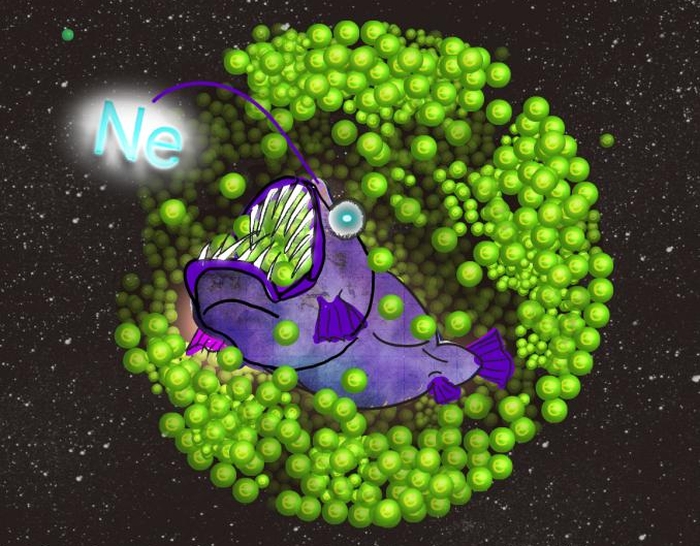 (Kavli IPMU)
(Kavli IPMU)
This illustration actually represents a process called electron capture, a type of radioactive decay in which an electron from one of the outer shells of an atom is absorbed - or captured - by its nucleus. This converts one of the protons to a neutrons, and the atom emits a neutrino.
A team of researchers running simulations recently discovered that neon in the core of massive stars can capture so many electrons, they cause the core of the star to collapse, resulting in a neutron star.
The cores of massive stars in the range of 8-10 times the mass of the Sun are rich in magnesium, neon and oxygen, as well as a bunch of electrons bouncing around, producing enough energy to keep the core from collapsing. But once the core density is high enough, the magnesium, and then the neon, capture so many electrons that the core collapses.
Why the artist has chosen to depict this as an angler fish is a mystery, but some gifts you just don't question.
Super helpful actual size of a primordial black hole
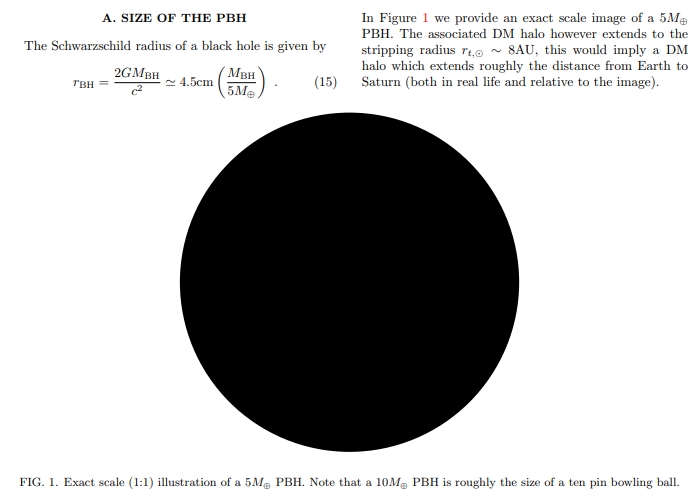 (Schultz and Unwin, arXiv, 2019)
(Schultz and Unwin, arXiv, 2019)
You know that black holes are, like, way dense, right? Well, this illustration from a paper speculating whether Planet Nine is a black hole really drives it home.
This is the actual size of the event horizon of a black hole about five times the mass of Earth. It's about 9 centimetres (3.5 inches) across. So that's basically five Earths, smooshed into a sphere a little bigger than a baseball.
It's not exactly silly, but it is a little cheeky. It's also extremely simple and extremely effective. So it remains one of our favourite scientific diagrams of all time.
